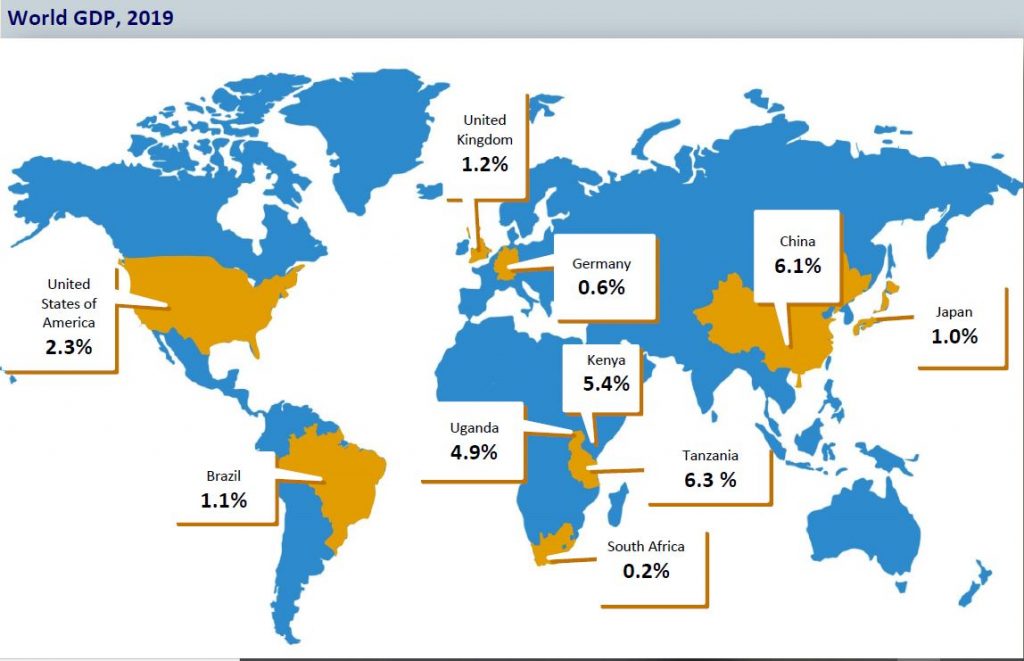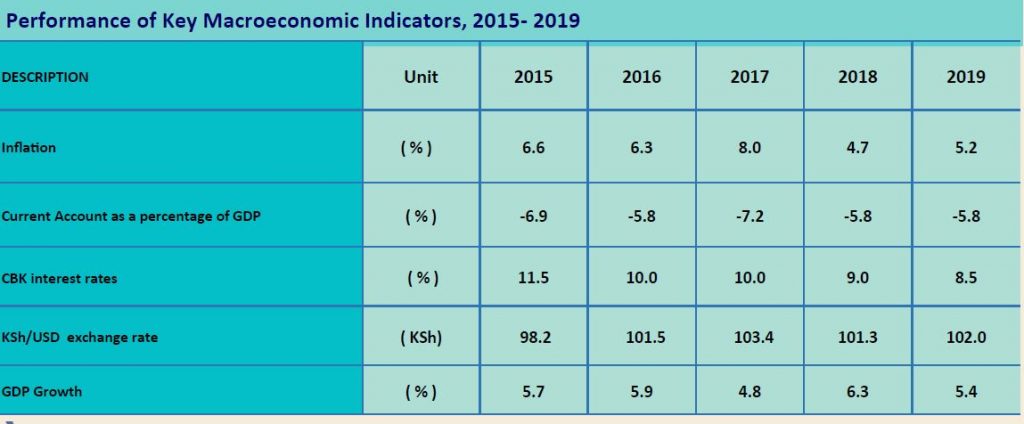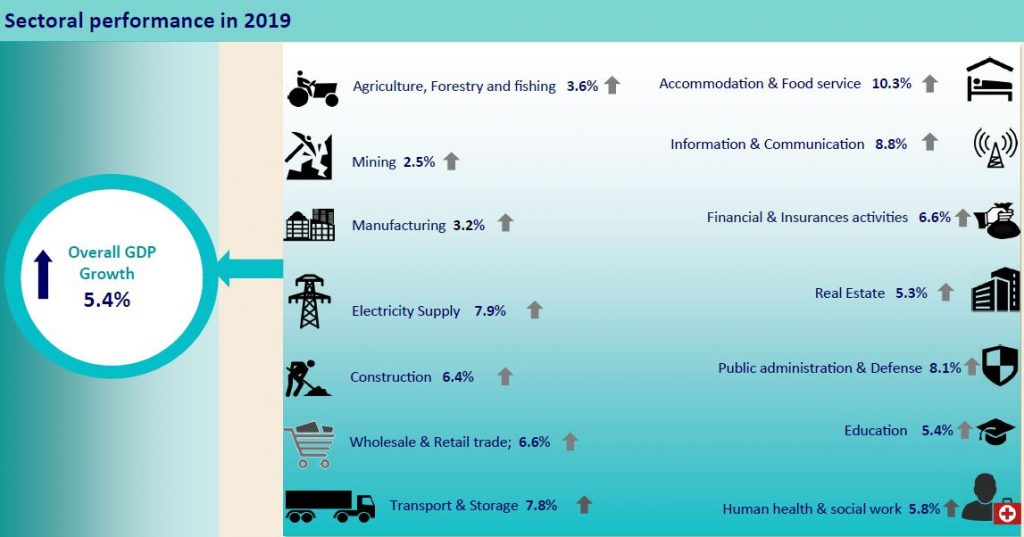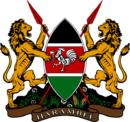ECONOMY OF KENYA

Source: Kenya National Bureau of Statistics Economic Survey 2020
Background
In 1965 Kenya’s Founding fathers adopted Sessional Paper No.10 of 1965 entitled the ‘African Socialism and its Application to Planning in Kenya’. This was the vision document that pictured a nation with an Africanized economy and contributed to the establishment of locally owned industries. The Sessional Paper was later revised into Sessional Paper Number 1 of 1986 and achieved significant milestones. On 10 June 2008, the Kenya Vision 2030 was launched as the country’s National Development Blueprint with the overall goal to create a globally competitive and prosperous nation with a high quality of life by the year 2030 that aims to transform Kenya into a newly industrializing, middle-income country for all citizens in a clean and secure environment. To date, significant progress and milestones have been achieved towards the realization of the Vision 2030.
The Economy of Kenya
Kenya is the economic, financial, and transport hub of East Africa. Kenya’s real GDP growth has averaged over 5% for the last decade. Since 2014, Kenya has been ranked as a lower middle income country because its per capita GDP crossed a World Bank threshold.
Infrastructure development remains a priority for the Government particularly the development of railways, road and ports. At independence Kenya had only 1,800 km of tarmacked roads. Successive governments played their part and built over 11,200 kms. The Standard Gauge Railway from Mombasa to Nairobi was launched in 2017.
Agriculture is the backbone of the Kenyan economy with about 75% of Kenya’s population of roughly 48.5 million, who work at least part-time in the agricultural sector, including livestock and pastoral activities. The main agricultural products include tea, coffee and flowers. Over which 75% of agricultural output is from small-scale, rain-fed farming or livestock production.
Tourism plays a significant role in Kenya’s economy with Kenya hosting a variety of touristic packages including National parks, world renowned beaches and the Maasai Mara wildebeest migration. The Nairobi National Park is the only National park in the world that is located 30 minutes away from a capital city.

Source: Kenya National Bureau of Statistics Economic Survey 2020

Source: Kenya National Bureau of Statistics Economic Survey 2020
Sectoral Performance

Source: Kenya National Bureau of Statistics Economic Survey 2020
Economic Outlook
Economic activity in Kenya remained vibrant in 2019 though the performance was slower relative to 2018. The real Gross Domestic Product (GDP) grew by 5.4 per cent in 2019 compared to a growth of 6.3 per cent in 2018. The growth, albeit slower than 2018 was spread across all sectors of the economy but was more pronounced in service oriented sectors.
The slower growth in 2019 was also reflected in other macroeconomic indicators. The annual inflation increased from 4.7 per cent in 2018 to 5.2 per cent in 2019. The increase in inflation was mainly due to less favourable weather conditions in first half of 2019, though registering gradual improvement over the remaining part of the year resulting to drop in food prices and overall inflation. It’s important to note that prudent macroeconomic policies and stable Kenya shilling against the major currencies especially the US dollar helped in containing the inflation.
The performance of Kenya’s economy like most economies all over the world will largely be determined by how long lives and economic activities are going to be disrupted by the coronavirus disease (Covid-19). Most of the economic activities have so far been slowed down by restrictions resulting from containment and cessation of sections of the population, the nationwide curfew and stoppage of international passenger travel.
The global economy is projected to remain suppressed due to slowdown in industrial output, weak business confidence and increased trade tensions, even before the rapid spread of the COVID–19 pandemic. A weak global economy is likely to negatively impact on Kenya’s exports, more so horticultural products as well as the tourism sector.
The onset of long rains was timely during the first quarter of 2020 and the rains were well spread across the country. The weather forecast points to a possibility of near normal long rains in most parts of the country while most key agricultural zones are expected to receive slightly above normal rainfall in 2020. Earlier in 2020, the country experienced invasion of the desert locusts mostly in the arid and semi-arid areas but the government has managed to mitigate their negative impact on agriculture.
In the short term, the government’s fiscal policies in national budget are likely to focus on re-orientation of expenditure to initiatives aimed at control and eventual elimination of Covid-19 in the country. Overall, factors against accelerated growth are likely to outweigh pro-growth aspects by far in 2020.
